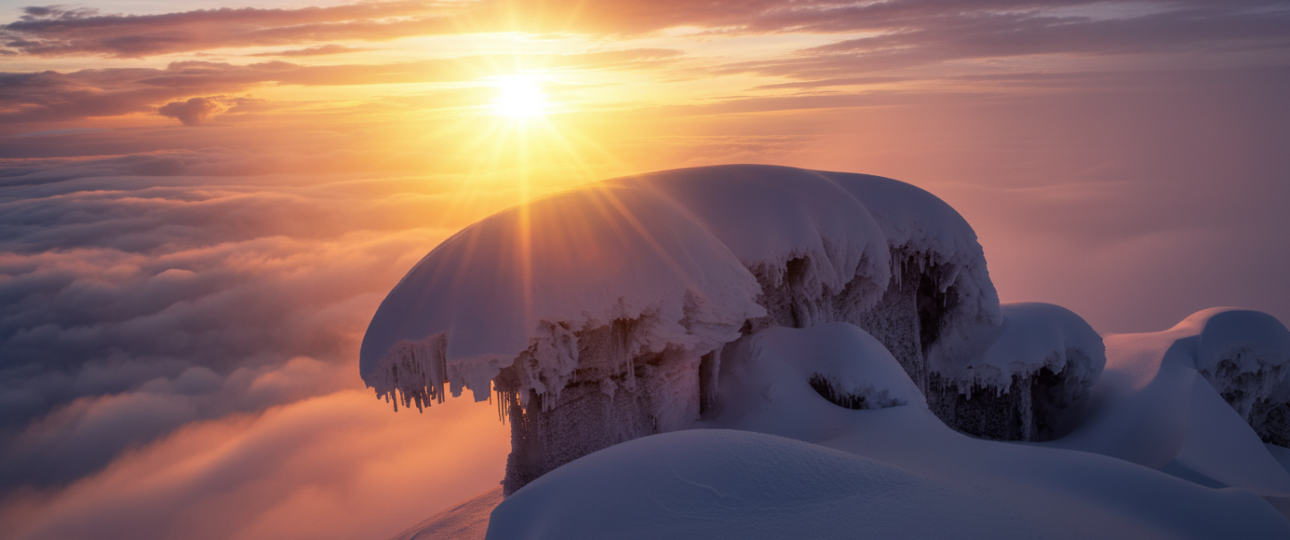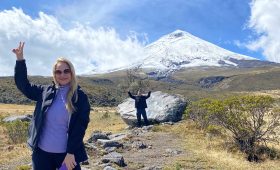The moment the volcano awakens
Climbing Cotopaxi is both a physical and mental challenge, but watching the sunrise from its summit — 5,897 meters above sea level — makes every step worthwhile.
As the first rays of sunlight break over the horizon, the sky transforms from deep blue to fiery orange, and the volcano’s perfect cone casts a long triangular shadow across the Andean valley.
It’s a moment of silence, purity, and awe — when the mountain seems to breathe.
The night ascent
The final push begins around midnight from the José Rivas refuge. Equipped with crampons, ice axes, and ropes, climbers move slowly over the glacier. Each step blends focus and wonder: the crunch of ice beneath your boots, the stars reflecting on the snow, and the steady rhythm of your breath in the thin air. It’s a surreal journey through darkness, guided only by the beam of your headlamp and the promise of dawn.
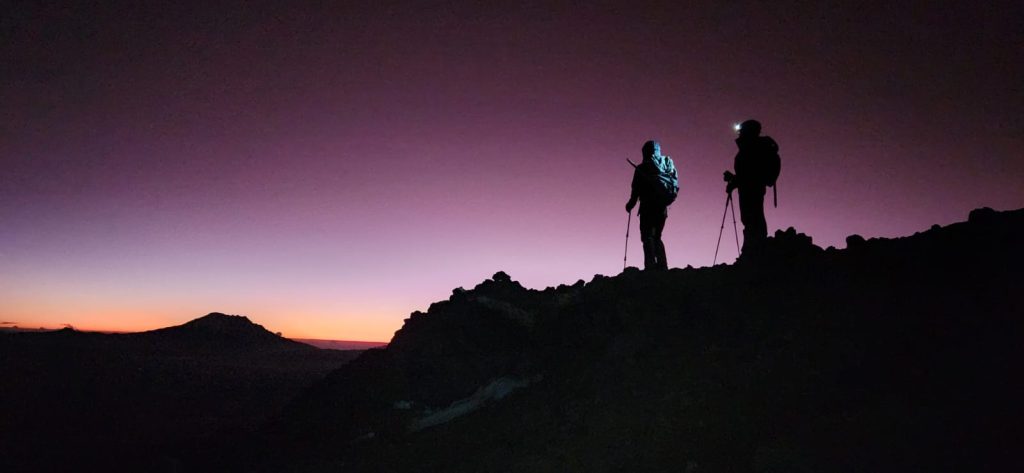
The highest sunrise in Ecuador
Around 6 a.m., the sun rises behind the Antisana and the Illinizas. Golden light floods the steaming crater of Cotopaxi, reminding everyone that beneath this frozen world lies an active volcano.
From the summit, you can see other Andean giants — Chimborazo, Cayambe, and Tungurahua — stretching toward the horizon.
The view feels endless, like standing at the edge of another planet.
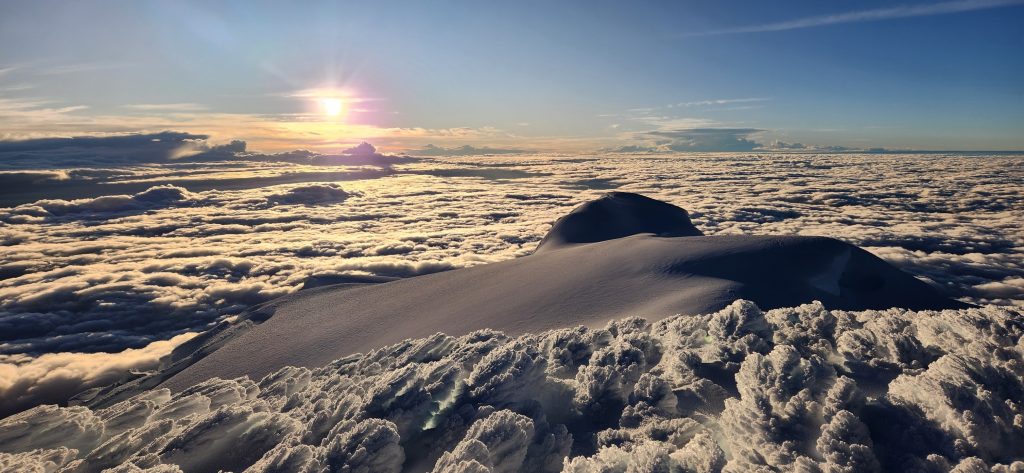
A moment of reflection
Witnessing sunrise from the summit of Cotopaxi isn’t just an athletic achievement — it’s a spiritual experience.
It’s about humility, resilience, and gratitude. The cold, exhaustion, and darkness fade away, leaving only light — pure, vivid, and eternal.
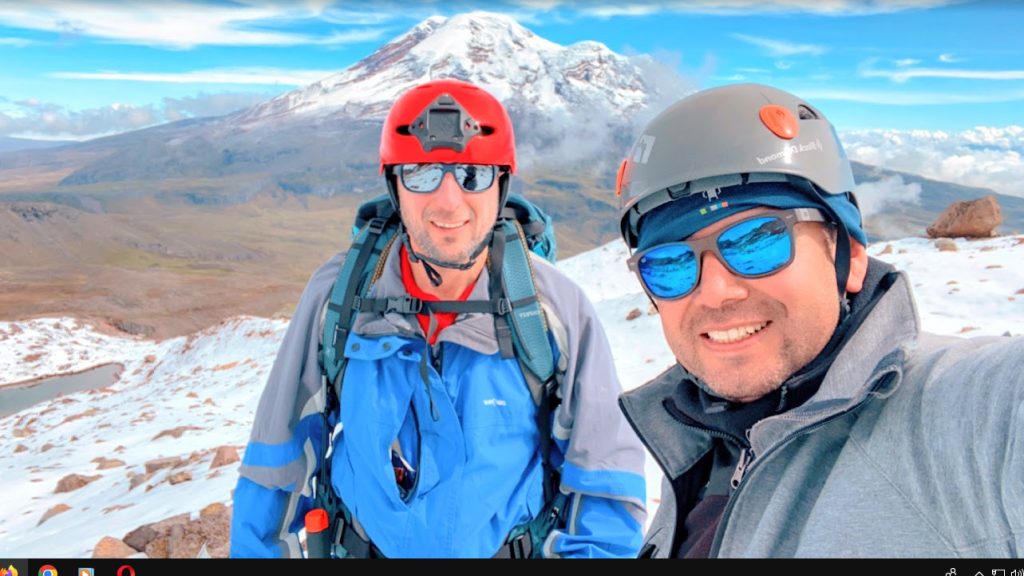
🧗♂️ Tips if you plan to experience it
-
Start your acclimatization at least a week in advance (Rumiñahui, Iliniza Norte, or Pasochoa are perfect practice climbs).
-
Wear the three-layer system: liner, fleece, and waterproof shell.
-
Keep a steady pace and sip water every 20 minutes.
-
Always climb with a certified ASEGUIM or UIAGM guide.
-
Bring a reliable headlamp and extra batteries — the night ascent depends on it.

